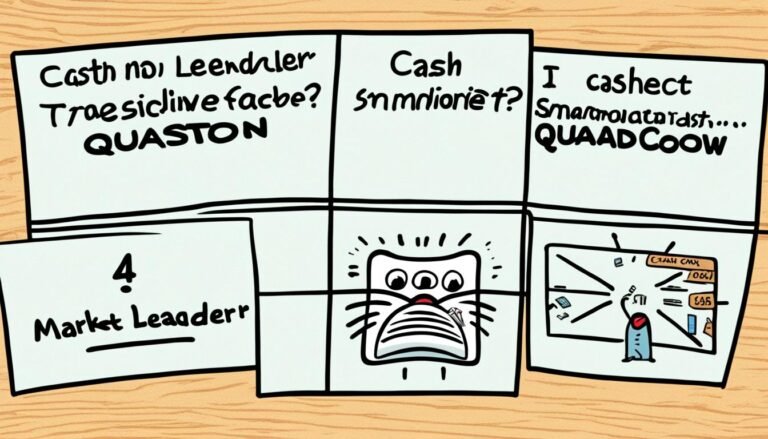Cognitive Dissonance: Reducing Buyer’s Remorse
Did you know that up to 65% of consumers regret their purchase decisions? This is known as post-purchase cognitive dissonance. It’s a mix of conflicting feelings that can make us feel guilty or stressed. As we move through the year, many of us are behind on our goals, and some have forgotten them.
Understanding why we feel this way can help us make better choices. For example, having a Rakuten Kobo Aura eReader for over six years shows it’s a good buy. But not all purchases are as successful. Feeling regret is common, especially with expensive items like electronics and jewelry. By understanding this, we can make choices that make us happier.
Key Takeaways
- Buyer’s remorse, also known as post-purchase cognitive dissonance, affects up to 65% of consumers.
- High-price purchases and unmet expectations increase the likelihood of buyer’s remorse.
- Effective post-purchase reassurance can significantly enhance satisfaction.
- Understanding buyer’s psychology aids in decision justification and reducing cognitive dissonance.
- Accurate advertising and honest information can prevent post-purchase dissonance.
Understanding Cognitive Dissonance
Cognitive dissonance is when someone feels uncomfortable because they have conflicting thoughts or beliefs. This discomfort makes people want to fix the inconsistency.
Definition of Cognitive Dissonance
Cognitive dissonance is the feeling of discomfort from having contradictory beliefs or values. For example, it happens when actions don’t match with what someone deeply believes. This leads to emotional responses, making people change their beliefs or actions to feel better—a key part of how we make decisions.
Psychological Impact
Cognitive dissonance can deeply affect people. It can make them feel guilty, stressed, sad, or regretful. These feelings can harm personal well-being and how we make decisions. Many consumers change their views or look for more information to ease this discomfort.
Interestingly, 78% of consumers feel this dissonance when faced with mixed messages in marketing. This shows how common it is in our daily choices.
Examples in Everyday Life
Cognitive dissonance shows up in many daily situations. Take a smoker who knows smoking is bad but still smokes. They might make excuses or say it helps with stress.
For new leaders like Devesh, the CMO of Wealthsimple, it can be tough to balance short-term goals with long-term planning under market pressure. This shows how we often justify our decisions to avoid discomfort, leading to changes in what we believe or do.
Causes of Buyer’s Remorse
Understanding why people feel buyer’s remorse is key to making customers happier and improving marketing. This feeling can hit anyone, from those buying everyday items to those making big investments. It often comes from not meeting expectations, high costs, different values, and what others think.
Mismatched Expectations
When a product doesn’t live up to what customers expected or what was promised, it can cause discomfort. This discomfort, or cognitive dissonance, is a big reason for buyer’s remorse. To avoid this, making sure ads are honest is a good marketing move to match what customers hope for and keep them happy.
High Price Points
Feeling like you’ve spent too much can make buyer’s remorse worse. High prices make customers wonder if they could have gotten a better deal somewhere else. Being clear about prices and showing the value of a product helps with this. It also helps keep customers satisfied.
Conflicting Values
Buying something that goes against a customer’s values can lead to regret. For example, someone who cares about the environment might regret buying a product that harms the planet. Showing how products match with what customers value can help lessen remorse and make customers happier.
Opinions of Others
What others think can really affect how a buyer feels after a purchase. If friends or family don’t like the purchase, the buyer might start to doubt their choice. Sharing positive feedback can help balance out negative opinions and improve customer satisfaction and marketing.
In the end, businesses need to focus on these points to reduce buyer’s remorse and keep customers happy. Thoughtful marketing strategies can make a big difference.
Psychology Behind Buyer’s Remorse
Understanding the psychology behind buyer’s remorse helps us see the emotional struggles people face after buying something. This often leads to post-purchase anxiety or feelings of regret and self-doubt.
Post-Purchase Anxiety
Many people feel anxious after a big buy. They might doubt their choice, thinking they could have picked something better. This worry comes from wanting to get the most out of their purchase.
“Buyers often experience emotional factors leading to buyer’s remorse after a purchase,” says a study on Consumer Behavior Analysis. “Cognitive dissonance arises when purchase expectations do not align with reality, causing buyer’s remorse.”
Regret and Self-Doubt
After buying, people often feel regret and doubt. This happens when what they expected from a product doesn’t match their experience. These feelings grow when they struggle with conflicting thoughts about their purchase.
Things like the cost, how involved they were in buying, and if the product fits their goals can make them regret their choice. In some cases, seeing how others have made different choices can also make them question their own decisions.
Understanding the complex emotions after buying is crucial for businesses. By knowing what buyers think and feel, companies can make marketing that helps avoid buyer’s remorse.
Marketing Strategies to Reduce Buyer’s Remorse
Addressing buyer’s remorse is key to making customers happy and keeping them loyal. By using positive reinforcement, brands can lower the chances of customers feeling unhappy after buying. Here are some strategies that work well.
Accurate Advertising
It’s crucial to have accurate ads to set the right expectations. Ads that mislead can lead to unhappy customers. Brands should make sure their ads are clear and honest about what they offer.
This honesty builds trust and strong customer relationships. It also helps with brand loyalty.
Customer Reviews and Testimonials
Using customer reviews and testimonials helps fight buyer’s remorse. They offer proof that products are good and give honest feedback. Happy customers sharing their stories make a brand more trustworthy.
Statistics show that brands using AI to measure purchase intent have seen an accuracy rate of more than 80%. This shows how important it is to use technology to get real feedback. Positive reviews make potential buyers feel good about their choices.
Money-Back Guarantees
Money-back guarantees give customers peace of mind. They show that customers can return a product if it’s not what they expected. This is especially true for online stores, where buyers might worry about making the right choice.
Guarantees help make customers happy and loyal. They show that a brand stands behind its products and cares about customer satisfaction.
In summary, using accurate ads, getting customer feedback, and offering money-back guarantees are key to fighting buyer’s remorse. These methods boost customer confidence and loyalty. They help businesses grow over time.
Role of Post-Purchase Communication
Good communication after a purchase is key to making customers happy and loyal. It helps ease doubts and boosts satisfaction. By making sure customers feel secure, businesses can make a big difference in how customers feel about their purchases.
Importance of Confirmation Emails
Sending out confirmation emails right away is a great way to make customers feel secure. It tells them their order went through. This simple step can make a big difference in how happy they are with their purchase.
A Salesforce report shows that 88% of customers think how a company makes them feel is as important as what it sells. So, making sure they feel good from the start is very important.
Providing Tracking Information
Keeping customers updated on their orders is key to making them feel secure. By telling them where their order is, you can ease their worries. This keeps them informed and helps manage their expectations.
It also lowers the chance of them feeling unhappy and wanting to return something. This is because they won’t worry about delays.
Offering Product Guides and Resources
After a sale, giving customers guides and tips on how to use their products can really help. It makes them feel more confident in their purchase. By teaching customers how to use their products, businesses can lower doubts and make sure the product meets their needs.
This approach not only makes customers happier but also builds loyalty. It shows the company cares about their customers and is committed to their satisfaction.
Cognitive Dissonance: Reducing Buyer’s Remorse
Understanding how post-purchase feelings affect customers is key for brands. They want to build loyalty and reduce buyer’s remorse. By using smart marketing, companies can ease the regret and doubt that come with big purchases.
Effective Techniques for Brands
Brands have many ways to lessen cognitive dissonance. It’s important to be clear and consistent when selling. Training sales teams to spot and fix doubts can make sales better.
Also, using customer testimonials and reviews helps build trust. Sending helpful emails after a purchase can make customers happier.
Case Studies of Successful Brands
Looking at successful brands gives us great marketing tips.
Rakuten Kobo is great at matching their marketing with what customers want. They offer a money-back guarantee and easy guides to reduce doubts. Wealthsimple also wins trust with clear talks and honest sales.
These brands show how key it is to tackle cognitive dissonance. By managing expectations and offering strong support after a purchase, companies can keep customers happy and loyal.
Enhancing Customer Satisfaction
Boosting customer satisfaction is key for any business wanting to last. Using Positive Reinforcement Techniques can really help improve how happy customers are.
Proactive Customer Support
It’s vital to support customers before they even have issues. This means reaching out to them first. It helps lower worries after buying and makes the experience better. For example:
- Regular follow-ups after buying
- Offering detailed guides on how to use products
- Fixing problems quickly
These methods make customers feel important and cared for from start to finish with the brand.
Reward and Loyalty Programs
Reward and loyalty programs can make customers feel good about their choices. Companies like Starbucks show how well these work in keeping customers around:
- Points for every buy
- Special deals and sales
- Happy birthday rewards and personal offers
These programs give more perks and build a strong emotional connection with the brand. This helps fight doubts and boosts overall happiness with the brand.
Consumer Behavior Analysis
In today’s market, knowing Consumer Behavior Analysis is key for brands to avoid buyer’s remorse. By looking into what causes cognitive dissonance, marketers can make strategies that match what consumers expect and get.
Identifying Pain Points
Finding out what hurts consumers is vital in Consumer Behavior Analysis. These issues often come from complicated products or hard learning curves. For example, buying tech like smartphones or laptops might cause dissonance if they don’t live up to what was promised or if a new model comes out too soon.
Doing a deep dive can show common pain points among buyers, like:
- Difficulty in using the product
- Discrepancy between advertised features and actual performance
- Problems encountered post-purchase
Addressing Common Concerns
It’s important to tackle consumer worries with smart marketing strategies. One good way is by giving out detailed product guides and resources. Clear info helps close the gap between what people expect and what they get, lowering cognitive dissonance.
Using digital tools like product reviews and customer stories can also calm potential buyers. Dissonance Theory says that when there’s a gap between what people believe and what ads say, it can lead to regret after buying. By tackling these issues early, brands can make customers happier and more loyal.
“Marketing strategies aimed at managing expectations and providing reassurances are key to reducing post-purchase dissonance.”
Product Quality Reinforcement
In today’s market, product quality reinforcement is key to standing out. Brands need to show what makes their products special. This helps make customers feel good about their choices and stay loyal.
Highlighting Unique Selling Propositions
Brands should show off their special features. These could be better materials, new tech, top-notch craftsmanship, or amazing customer service. By sharing these, brands can make sure customers feel they made the right choice. This can lower doubts after buying.
It’s interesting that 79% of shoppers trust online reviews as much as advice from friends. This shows how important good reviews are in making products seem valuable.
Using AR and VR for Better Visualization
AR and VR give a big boost to product quality reinforcement. They let customers see products in their own space before buying. This helps match what they expect with what they get. It also lowers the chance of regretting a purchase.
For example, IKEA and Home Depot use AR to let customers see how furniture and items will look at home.
By mixing deep consumer behavior analysis with new tech, products become more appealing. This approach makes customers more sure of their choices. It leads to fewer returns, less negative feedback, and builds lasting loyalty to the brand.
Conclusion
Addressing cognitive dissonance is key to reducing buyer’s remorse and building brand loyalty. It helps businesses meet customer expectations and improve the shopping experience. Marketing, customer reviews, and support after purchase are important for this.
Post-purchase communication and product quality are also crucial. They help build a loyal customer base. Things like confirmation emails and product guides reassure and delight customers. This leads to positive word-of-mouth and strengthens the brand.
By understanding consumer behavior and supporting customers well, businesses can improve their strategies. This approach leads to more sales and a competitive edge. Addressing cognitive dissonance, offering great support, and focusing on quality helps build strong brand loyalty and keeps customers happy.
Source Links
- Marketing: Cognitive Dissonance & Buyer’s Remorse
- Effective Strategies for Minimizing Buyer’s Remorse
- How Does Cognitive Dissonance Influence Sales Outcomes? – Blue Monarch Group
- Cognitive Dissonance (Behavioural insights + Marketing)
- The Effect Of Cognitive Dissonance On Consumer Behaviour
- Consumer Psychology: Buyer’s Remorse | Supersede Media
- Buyer’s Remorse
- The Psychology Behind Buyers Remorse And Gazundering – FasterCapital
- The real impact of ‘Buyers Regret’ or Cognitive Dissonance on your future dealings with your clients..
- Buyer’s remorse
- 6 Ways to Reduce Cognitive Dissonance in Shopper Marketing
- 6 Efficient Tips To Reduce Post-Purchase Cognitive Dissonance
- How Do Consumers Reduce Post Purchase Dissonance? | WeSupply Labs
- What is Post Purchase Dissonance? Causes of Post Purchase Dissonance
- What is Post-Purchase?
- Post Purchase Dissonance: 7 Ways to Reduce It (+Examples) – PickyStory
- What is post-purchase dissonance, and why does it matter?
- Kill Post-Purchase Dissonance: Your Path to Loyal Customers
- Reducing Cognitive Dissonance through Consumption-Based Models in AI: Enhancing Customer…
- Dissonance Theory – Adogy
- Post-Purchase Behavior: Definition, Outcomes, & Steps
- Conquering Post-Purchase Cognitive Dissonance
- Post-purchase dissonance: 7 clever ways to reduce it and boost retention rates | Eshopbox
- Post Purchase Dissonance: 8 Clever Ways to Reduce It
- Understanding Cognitive Dissonance in Buyer Choices







